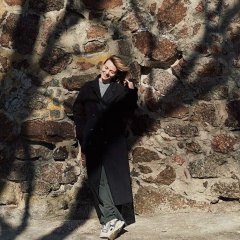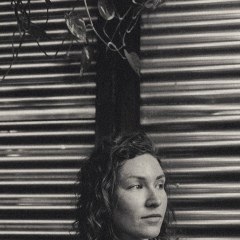Импрессионизм. Продукты не нарезать, а измельчить в блендере.
Экспрессионизм. Вложить в кастрюлю целую свеклу, через час- полтора – картофель, морковь, лук целиком и целую головку капусты. Варить три часа.
Кубизм. Продукты нарезать кубиками.
Романтизм. При подаче борщ посыпать лепестками розы.
Символизм. Гостям подают в тарелке бумажки с надписями «лук», «свекла», «морковь», «мясо».
Сюрреализм. В готовый борщ влить бутылку водки.
Гиперреализм. Отварить свеклу, картофель. Нарезать лук, капусту, соленые огурцы (можно заменить сельдью). Смешать, полить растительным маслом.
Фольклорный стиль. На стол ставят корзину с сырыми овощами. Дальше гости все должны сделать сами.
Альтернативное искусство. Сварить борщ не на говяжем бульоне, а скажем, на бульоне из куропаток, головы лосося, копченой утки.
Модернизм. Подать гостям банки с борщевым концентратом.
Соцреализм. Варят борщ из гнилой картошки. Гостям читают лекцию о неуклонном повышении производства продуктов питания по сравнению с 1913 годом и о коренных преимуществах нашего борща. Недовольным бьют морды.
Соцреализм-2. Гостей заталкивают в чулан и ставят им речь Брежнева, чтобы заглушить чавканье хозяев. Недовольным бьют морды.
Соцреализм-3. Гостям связывают руки, ставят на стол кастрюлю, от которой идет запах ароматного борща. Гости обязаны наперебой расхваливать наш борщ. Недовольным бьют морды.
Неопримитивизм. Гостей отправляют в магазин за продуктами, затем предоставляют им возможность готовить борщ самостоятельно.
Абстракционизм. Выйти на улицу, нарвать любой травы, что под руку попадется, залить кипятком. Варить 40 минут. Соль, перец по вкусу.
Неоклассицизм. Мясной бульон заменить порошковым, свежие овощи - сушеными.
Концептуализм. В тарелку налить кипятка. Подавать охлажденным.
Гиперконцептуализм. Подать гостям полные тарелки ароматного борща, а ложки спрятать так, чтобы никто не нашел. Сам хозяин извиняется и уходит по срочному делу.
Оп-арт. Наливают полную тарелку ароматного борща и показывают ее гостям издали.
Поп-арт. Приготовленные для борща овощи залить спиртом и поджечь.
Хеппенинг. После того, как гости с аппетитом поели, продемонстрировать им сваренную в борще кошку. Акция называется «А потом - суп с котом».
Перфоманс. Приглашенных на борщ гостей хозяин и хозяйка встречают в чем мать родила.
Постмодернизм. Гостям разливают воображаемый борщ, и все усиленно делают вид, что его едят. Того, кто воскликнет «Но ведь никакого борща здесь нет!», выгоняют за бескультурье и хулиганство.
Соц-арт. Варят борщ из киви, ананасов, личи, манго, дуро, карамболей, и прочей мушмаллы с фейхуой.
Экспрессионизм. Вложить в кастрюлю целую свеклу, через час- полтора – картофель, морковь, лук целиком и целую головку капусты. Варить три часа.
Кубизм. Продукты нарезать кубиками.
Романтизм. При подаче борщ посыпать лепестками розы.
Символизм. Гостям подают в тарелке бумажки с надписями «лук», «свекла», «морковь», «мясо».
Сюрреализм. В готовый борщ влить бутылку водки.
Гиперреализм. Отварить свеклу, картофель. Нарезать лук, капусту, соленые огурцы (можно заменить сельдью). Смешать, полить растительным маслом.
Фольклорный стиль. На стол ставят корзину с сырыми овощами. Дальше гости все должны сделать сами.
Альтернативное искусство. Сварить борщ не на говяжем бульоне, а скажем, на бульоне из куропаток, головы лосося, копченой утки.
Модернизм. Подать гостям банки с борщевым концентратом.
Соцреализм. Варят борщ из гнилой картошки. Гостям читают лекцию о неуклонном повышении производства продуктов питания по сравнению с 1913 годом и о коренных преимуществах нашего борща. Недовольным бьют морды.
Соцреализм-2. Гостей заталкивают в чулан и ставят им речь Брежнева, чтобы заглушить чавканье хозяев. Недовольным бьют морды.
Соцреализм-3. Гостям связывают руки, ставят на стол кастрюлю, от которой идет запах ароматного борща. Гости обязаны наперебой расхваливать наш борщ. Недовольным бьют морды.
Неопримитивизм. Гостей отправляют в магазин за продуктами, затем предоставляют им возможность готовить борщ самостоятельно.
Абстракционизм. Выйти на улицу, нарвать любой травы, что под руку попадется, залить кипятком. Варить 40 минут. Соль, перец по вкусу.
Неоклассицизм. Мясной бульон заменить порошковым, свежие овощи - сушеными.
Концептуализм. В тарелку налить кипятка. Подавать охлажденным.
Гиперконцептуализм. Подать гостям полные тарелки ароматного борща, а ложки спрятать так, чтобы никто не нашел. Сам хозяин извиняется и уходит по срочному делу.
Оп-арт. Наливают полную тарелку ароматного борща и показывают ее гостям издали.
Поп-арт. Приготовленные для борща овощи залить спиртом и поджечь.
Хеппенинг. После того, как гости с аппетитом поели, продемонстрировать им сваренную в борще кошку. Акция называется «А потом - суп с котом».
Перфоманс. Приглашенных на борщ гостей хозяин и хозяйка встречают в чем мать родила.
Постмодернизм. Гостям разливают воображаемый борщ, и все усиленно делают вид, что его едят. Того, кто воскликнет «Но ведь никакого борща здесь нет!», выгоняют за бескультурье и хулиганство.
Соц-арт. Варят борщ из киви, ананасов, личи, манго, дуро, карамболей, и прочей мушмаллы с фейхуой.
Impressionism. Do not chop the food, but grind it in a blender.
Expressionism. Put a whole beet in a saucepan, after an hour and a half - potatoes, carrots, whole onions and a whole head of cabbage. Cook for three hours.
Cubism. Cut the food into cubes.
Romanticism. When serving borscht, sprinkle with rose petals.
Symbolism. Guests are served on a plate with pieces of paper with the words "onions", "beets", "carrots", "meat".
Surrealism. Pour a bottle of vodka into the finished borscht.
Hyperrealism. Boil beets, potatoes. Chop onions, cabbage, pickles (can be replaced with herring). Mix, pour over with vegetable oil.
Folk style. A basket of raw vegetables is placed on the table. Then the guests have to do everything themselves.
Alternative art. Cook borscht not in beef broth, but, say, in broth from partridges, salmon head, smoked duck.
Modernism. Serve jars of borsch concentrate to the guests.
Socialist realism. Borscht is cooked from rotten potatoes. Guests are given a lecture on the steady increase in food production compared to 1913 and on the fundamental benefits of our borscht. They beat the muzzles on the dissatisfied.
Socialist Realism-2. The guests are pushed into the closet and they are given Brezhnev's speech to drown out the masters' champing. They beat the muzzles on the dissatisfied.
Socialist realism-3. The guests' hands are tied, a saucepan is placed on the table, from which comes the smell of fragrant borscht. Guests are obliged to vying with each other to praise our borscht. They beat the muzzles on the dissatisfied.
Neo-primitivism. Guests are sent to the grocery store, then given the opportunity to cook borscht on their own.
Abstractionism. Go out into the street, pick up any grass that comes to hand, pour boiling water over. Cook for 40 minutes. Salt and pepper to taste.
Neoclassicism. Replace meat broth with powder, fresh vegetables - dried.
Conceptualism. Pour boiling water into a plate. Serve chilled.
Hyperconceptualism. Serve the guests full plates of fragrant borscht, and hide the spoons so that no one can find them. The owner himself apologizes and leaves on an urgent matter.
Op art. A full plate of aromatic borscht is poured and shown to guests from afar.
Pop Art. Pour the vegetables prepared for borscht with alcohol and set fire.
Happening. After the guests have eaten with gusto, show them the cat cooked in borscht. The action is called “And then - soup with a cat”.
Performance. The host and hostess, invited to the borscht, are greeted in what their mother gave birth to.
Postmodernism. Guests are poured an imaginary borscht, and everyone pretends to eat it. Anyone who exclaims “But there’s no borscht here!” Is kicked out for lack of culture and hooliganism.
Sots art. Borscht is cooked from kiwi, pineapple, lychee, mango, duro, carambole, and other medalla with feihui.
Expressionism. Put a whole beet in a saucepan, after an hour and a half - potatoes, carrots, whole onions and a whole head of cabbage. Cook for three hours.
Cubism. Cut the food into cubes.
Romanticism. When serving borscht, sprinkle with rose petals.
Symbolism. Guests are served on a plate with pieces of paper with the words "onions", "beets", "carrots", "meat".
Surrealism. Pour a bottle of vodka into the finished borscht.
Hyperrealism. Boil beets, potatoes. Chop onions, cabbage, pickles (can be replaced with herring). Mix, pour over with vegetable oil.
Folk style. A basket of raw vegetables is placed on the table. Then the guests have to do everything themselves.
Alternative art. Cook borscht not in beef broth, but, say, in broth from partridges, salmon head, smoked duck.
Modernism. Serve jars of borsch concentrate to the guests.
Socialist realism. Borscht is cooked from rotten potatoes. Guests are given a lecture on the steady increase in food production compared to 1913 and on the fundamental benefits of our borscht. They beat the muzzles on the dissatisfied.
Socialist Realism-2. The guests are pushed into the closet and they are given Brezhnev's speech to drown out the masters' champing. They beat the muzzles on the dissatisfied.
Socialist realism-3. The guests' hands are tied, a saucepan is placed on the table, from which comes the smell of fragrant borscht. Guests are obliged to vying with each other to praise our borscht. They beat the muzzles on the dissatisfied.
Neo-primitivism. Guests are sent to the grocery store, then given the opportunity to cook borscht on their own.
Abstractionism. Go out into the street, pick up any grass that comes to hand, pour boiling water over. Cook for 40 minutes. Salt and pepper to taste.
Neoclassicism. Replace meat broth with powder, fresh vegetables - dried.
Conceptualism. Pour boiling water into a plate. Serve chilled.
Hyperconceptualism. Serve the guests full plates of fragrant borscht, and hide the spoons so that no one can find them. The owner himself apologizes and leaves on an urgent matter.
Op art. A full plate of aromatic borscht is poured and shown to guests from afar.
Pop Art. Pour the vegetables prepared for borscht with alcohol and set fire.
Happening. After the guests have eaten with gusto, show them the cat cooked in borscht. The action is called “And then - soup with a cat”.
Performance. The host and hostess, invited to the borscht, are greeted in what their mother gave birth to.
Postmodernism. Guests are poured an imaginary borscht, and everyone pretends to eat it. Anyone who exclaims “But there’s no borscht here!” Is kicked out for lack of culture and hooliganism.
Sots art. Borscht is cooked from kiwi, pineapple, lychee, mango, duro, carambole, and other medalla with feihui.
У записи 15 лайков,
5 репостов.
5 репостов.
Эту запись оставил(а) на своей стене Алексей Ратников



































